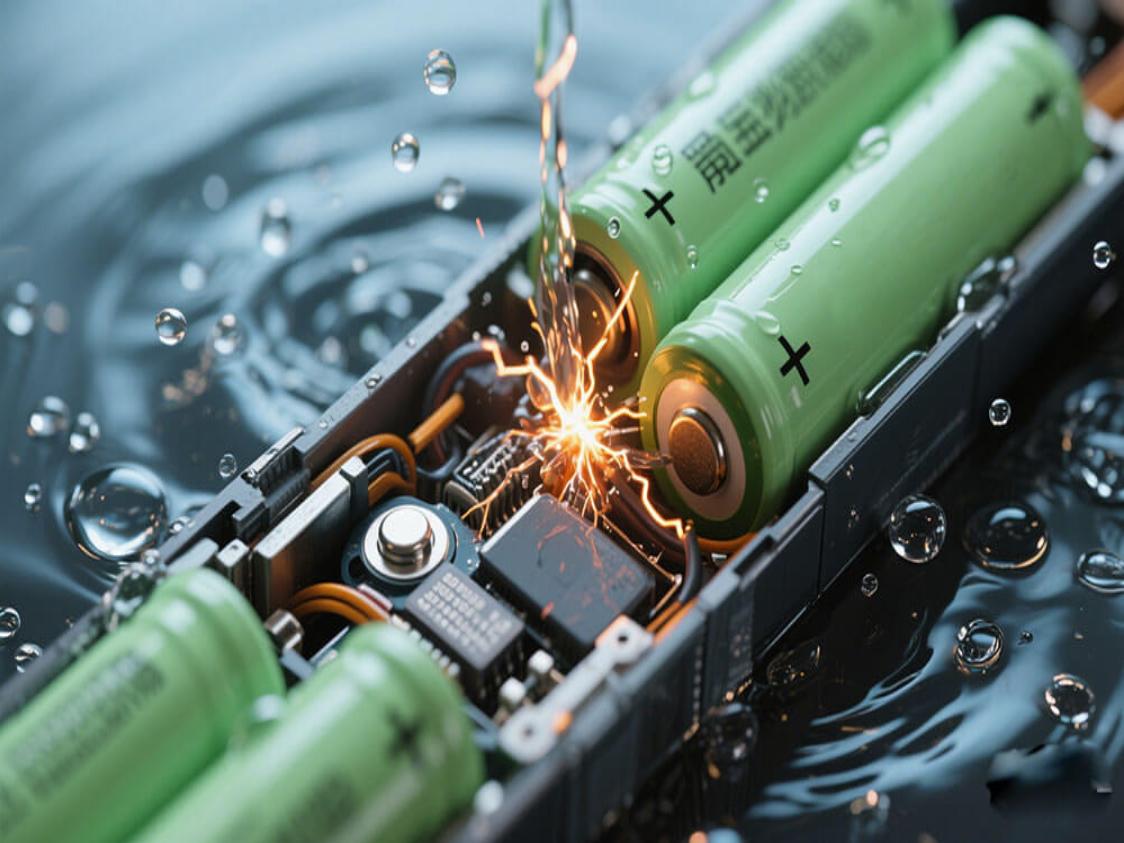
Lithium batteries pose significant safety risks upon water exposure, particularly in industrial settings. Contact with water can trigger hazardous chemical reactions, short circuits, and fires. For instance, groundwater in China’s Hetao Plain recorded lithium levels up to 1,790 µg/L, linked to a 37.4% non-carcinogenic health risk. These dangers underscore the critical need for robust safety protocols to prevent accidents.
-Water exposure risks: Fire or short circuits can occur; keep batteries dry.
-Saltwater vs. freshwater: Saltwater accelerates corrosion; use waterproof casings.
-Maintenance & disposal: Inspect regularly and discard damaged batteries properly.
1.1 Chemical Reactions
Water contact initiates aggressive exothermic reactions in lithium batteries. Lithium reacts with moisture, producing lithium hydroxide and flammable hydrogen gas. This gas-air mixture is explosive. Additionally, water exposure decomposes electrolytes like LiPF₆, releasing toxic gases (e.g., HF), compromising structural integrity and safety in sectors like medical devices and robotics.
1.2 Short Circuits, Heat, and Gas Release
Water ingress causes internal short circuits, leading to uncontrolled discharge and heat buildup. This may escalate to thermal runaway, exacerbated by flammable gases (hydrogen/chlorine). Case studies confirm localized heat spikes accelerate lithium deposition, heightening explosion risks in energy storage or transport systems.
1.3 Fire, Explosion, and Long-Term Damage
Combustible materials and gases within batteries can ignite uncontrollable fires. Water also degrades battery chemistry permanently. Statistics show water-induced reactions significantly elevate temperatures, emphasizing the need for protective enclosures in robotics and medical applications.
2.1 Freshwater Impact
Freshwater degrades battery components, reducing capacity and increasing internal resistance. Lithium mining’s freshwater consumption (e.g., in Chile) also threatens ecosystems, highlighting sustainability concerns.
2.2 Saltwater Corrosion Risks
Saltwater’s high conductivity accelerates terminal corrosion, causing electric arcing and material degradation. This forms internal shorting bridges, heightening delayed thermal runaway risks in industrial systems.
2.3 Enhanced Fire Risk from Saltwater
Saltwater reacts with electrolytes to produce flammable hydrogen/oxygen gases. Combined with heat from corrosion, this creates explosive conditions. Electrolyte degradation further compromises safety, necessitating rigorous maintenance in marine applications.
3.1 Waterproofing Solutions
IP65/IP67-rated enclosures prevent water ingress. Hazard Mitigation Analysis (HMA) recommends explosion controls, certified battery management systems, and deflagration vents. Large-scale installations should maintain water supplies for fire suppression.
3.2 Storage and Handling
-Store in ventilated, temperature-controlled warehouses (-20℃ to 35℃).
-For long storage, maintain 10℃ – 30℃ and cycle charges quarterly.
-Avoid high temperatures/combustibles; insulate discarded terminals.
3.3 Maintenance and Inspection
Routinely check for leaks/corrosion. Use hermetically sealed batteries with high IP ratings. Isolate water-damaged units immediately.
4.1 Immediate Actions
-Do not recharge submerged batteries.
-Remove from water; avoid terminal contact.
-If overheating/hissing occurs, place in a non-conductive container (e.g., sand-filled metal box).
-Only trained personnel should handle leaking batteries (using PPE).
4.2 Safe Disposal
-Tape terminals before disposal.
-Use certified recycling centers; never discard with regular trash.
-Follow regulations (e.g., U.S. DOT guidelines) for damaged units.
4.3 Professional Consultation
Seek experts if batteries:
-Show melting/severe corrosion.
-Are integrated into critical systems (e.g., medical devices).
-Require recovery or custom replacements.
Water exposure risks—chemical fires, short circuits, and explosions—are amplified by saltwater due to corrosion and conductivity. Industries must prioritize waterproofing, inspections, and proper disposal. Notably, 4% of electric vehicle fires stem from water exposure, reinforcing the need for proactive safety measures.
For custom lithium battery solutions, visit BESS's consultation page.
Next:CALB's "Ultimate Range" Marine Battery Shines at Norway's Maritime Exhibition
Previous:EVE Energy Showcases Innovation at Shenzhen Drone Expo, Powering Low-Altitude Economy